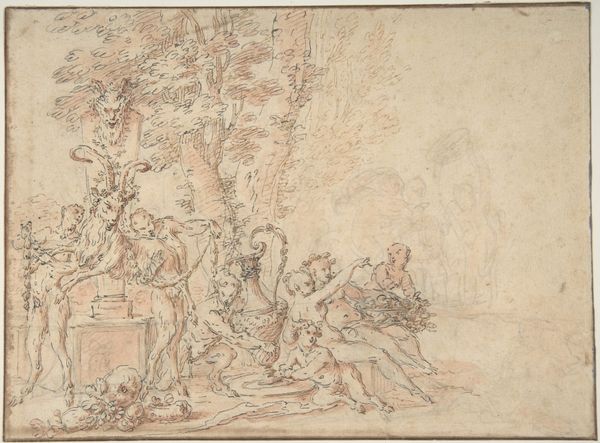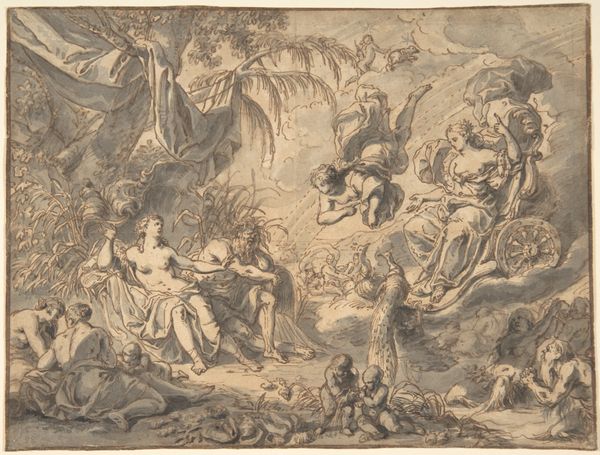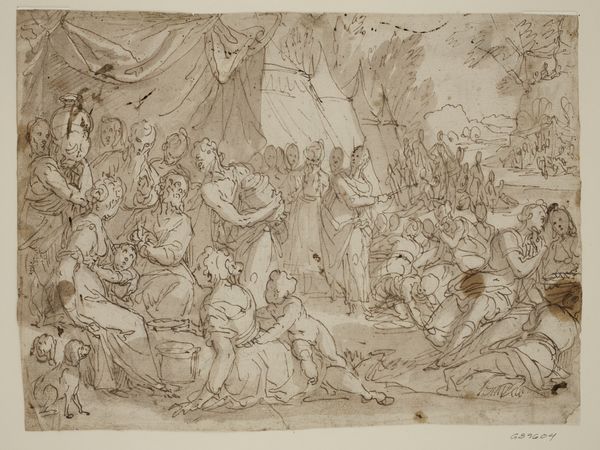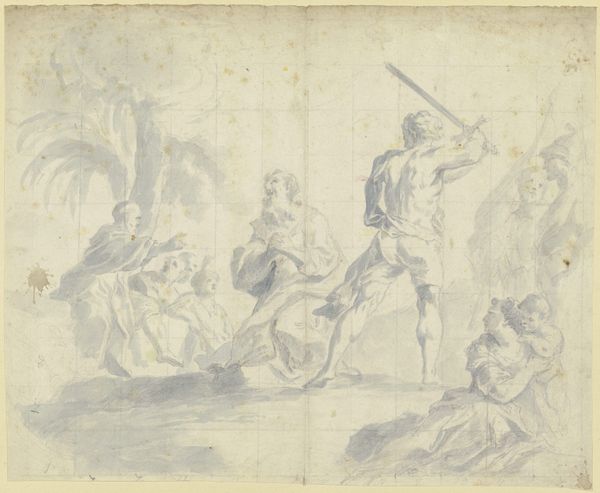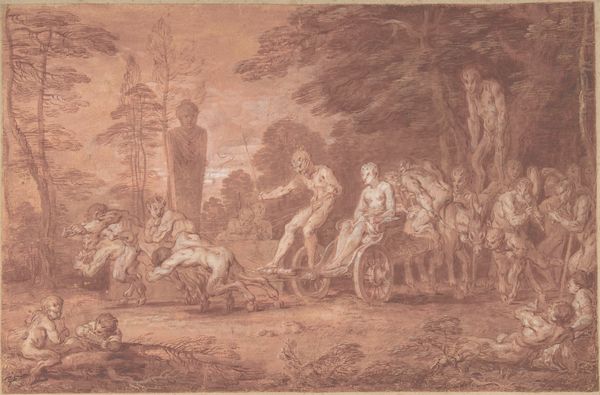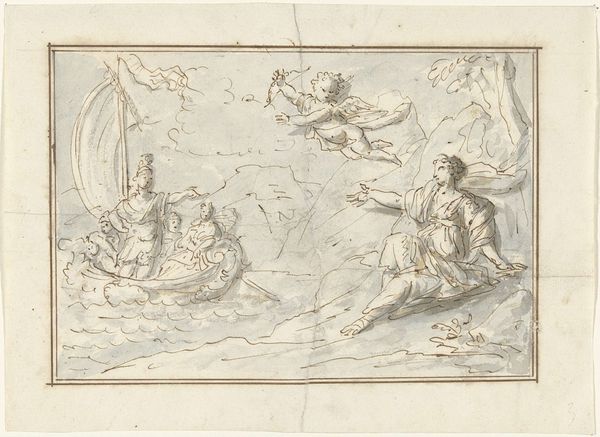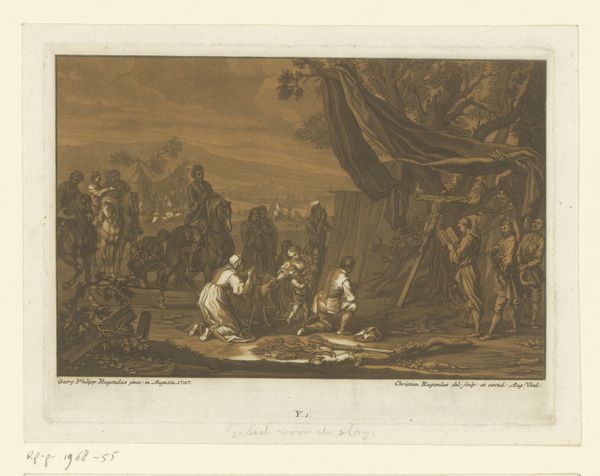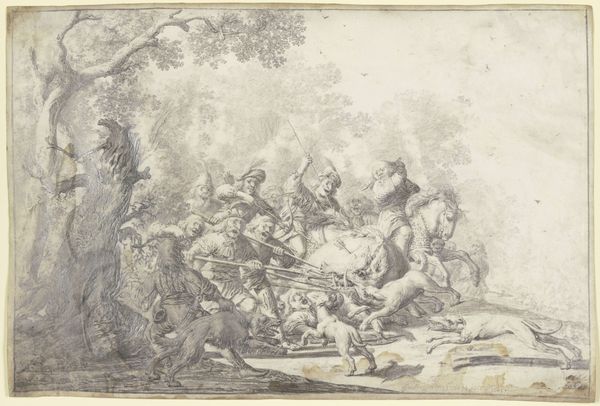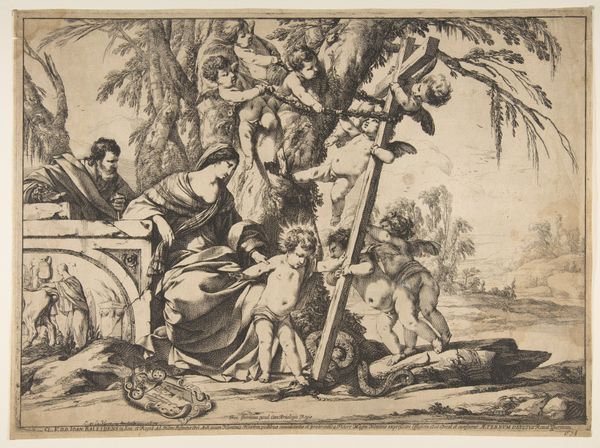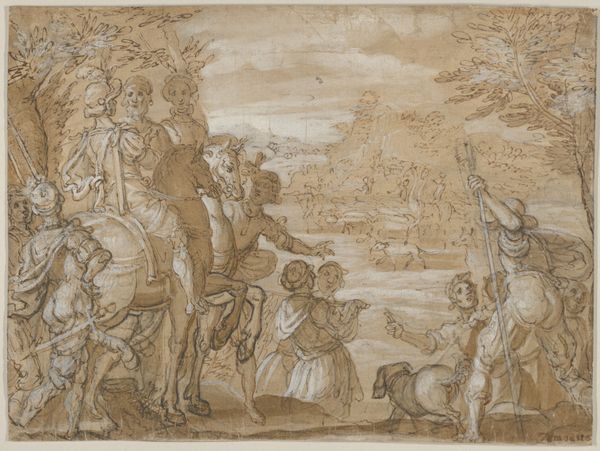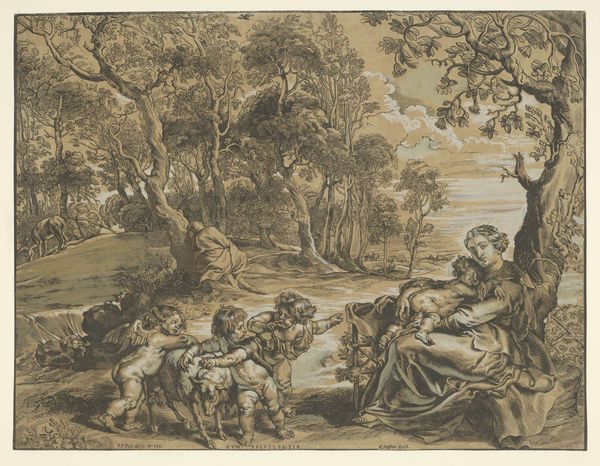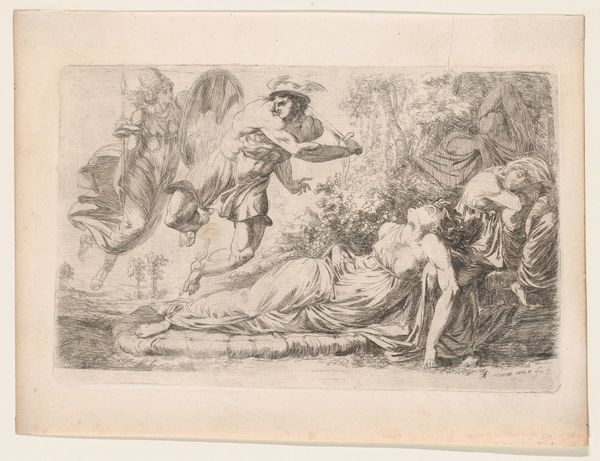
drawing, print, ink, pen
#
drawing
#
narrative-art
#
baroque
#
ink painting
# print
#
landscape
#
figuration
#
ink
#
horse
#
men
#
pen
#
history-painting
Dimensions: 5 3/4 x 11 1/8 in. (14.6 x 28.3 cm)
Copyright: Public Domain
Editor: This drawing, "Alexander and Bucephalus," is from the 17th century, artist unknown, rendered in ink. I’m struck by the contrast between the calm, almost theatrical scene on the right, and the much more active, chaotic image on the left, like there are two different moments being represented at once. What's your read on this work? Curator: It's interesting you pick up on that contrast, as it reflects a common theme in historical depictions of Alexander the Great. Observe how Bucephalus, untamed by others, kneels before Alexander, acknowledging his destiny. What does this tell us about leadership, particularly in the 17th century? Editor: It makes Alexander seem almost divinely appointed, if a wild horse is submitting to him like that. It creates a clear visual of his power. But what about the right side with the women gesturing, is that part of the story? Curator: Precisely! The right side depicts a courtly setting. Notice the gestures. It's a classical pose indicating speech, maybe council. Combined with Alexander’s domination over Bucephalus, it visually expresses not only physical power, but the ability to lead and persuade, two vital aspects of a ruler then, and arguably even now. Editor: I never would have put that together, but I see the link now. The symbols show his strength to conquer as well as command, it's like two halves making a whole. Curator: Indeed. Think of how important inherited symbols were for people and power at the time this work was created. This is cultural memory visualized; leadership idealized through historical and symbolic lenses. Editor: It's fascinating how much meaning is packed into one image. Thanks for illuminating those hidden layers! Curator: My pleasure. The beauty of art lies in its ability to speak across centuries, using symbols to echo through time.
Comments
No comments
Be the first to comment and join the conversation on the ultimate creative platform.
